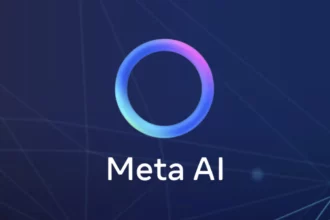What is LLM Fine-Tuning?
Ah, the magical world of LLM fine-tuning! Imagine you have a stylish sports car that runs like a dream, but you want to tweak it for Formula 1 races. That’s essentially what LLM fine-tuning does to large language models—it customizes them for specific tasks or domains, like giving your car a turbo boost for the track.
Now, let’s dive into the juicy details of LLM fine-tuning. It’s like taking a master chef’s recipe and adding your secret ingredients to make it even tastier—except here, we’re enhancing pre-trained LLMs to achieve better performance in targeted areas with limited resources.
Saviez-vous that fine-tuning an LLM isn’t a walk in the park? It requires some effort, but fear not! With an array of frameworks and tools tailored for LLMs popping up every day, the process is becoming more approachable and efficient.
So, how does fine-tuning differ from other techniques like RAG? Well, while RAG spices things up by integrating external data sources for richer responses, LLM fine-tuning focuses on recalibrating pre-trained models for more pinpoint accuracy in specific domains. Think of it as customizing your playlist versus adding songs from various genres.
When it comes to learning rates in LLM fine-tuning, the trick lies in finding that sweet spot. Experimenting with values between 0.02 to 0.2 can work wonders—kind of like tuning different radio stations until you find your favorite jam!
Have you ever heard of fine-tuning in transfer learning? It’s like unfreezing a frozen cake base and adding icing on top—it involves tweaking existing model layers alongside newly added ones to refine features for specific tasks. It’s all about leveling up those skills tailored for specialized needs.
Now that you’ve got a taste of what LLM fine-tuning is all about, don’t hit the brakes just yet! Keep reading ahead to explore more insights and practical tips on this fascinating topic. Trust me; there’s a lot more fun waiting down the road!
Table of Contents
ToggleHow to Fine-Tune an LLM on Your Own Data
How to Fine-Tune an LLM on Your Own Data:
Fine-tuning large language models (LLMs) on your own data can be a game-changer in enhancing their performance for specific tasks or domains. As mentioned earlier, general-purpose LLMs might not always meet the mark for specialized tasks due to their broad training. By fine-tuning these models on narrowly focused datasets, they can acquire deep domain expertise—like your favorite chef perfecting a signature dish with secret ingredients.
- Identify Relevant Data Sources: To kick off the fine-tuning process, you need a custom dataset rich in volume and quality that aligns with the specific tasks your LLM will cater to. It’s like selecting ripe, premium ingredients to prep a gourmet meal; only top-notch data will do!
- Preprocess Your Data: Just like prepping ingredients before cooking, data preprocessing is crucial. Techniques like data cleaning, tokenization, and normalization ensure your data is in optimal shape for fine-tuning—analogous to ensuring all your ingredients are chopped and ready before entering the cooking arena.
- Determining Data Volume: While quality is essential, quantity matters too! Aim for at least 200 rows of data to kickstart the benefits of fine-tuning your LLM. Remember, the more data you have—the more robust and flavor-packed your model can become!
- The Fine-Tuning Process: Think of fine-tuning as adding that final touch of seasoning to elevate flavor—it refines the model by training it on targeted data post its initial training phase.
Fun Fact: Did you know that machines also need recipe cards? Crafting prompt templates and utilizing techniques like PEFT method (Parameter-Efficient Fine-Tuning) are akin to providing precise instructions for your model’s culinary adventure in domain-specific training.
Whether you’re aiming to train a chatbot specifically tailored for customer support or refining an LLM’s proficiency in medical diagnoses—fine-tuning with your own data holds immense potential for customization and superior performance.
So buckle up, grab your spatula (or laptop), and embark on this exciting journey of fine-tuning an LLM tailored just for you—the master chef in the world of language processing awaits!
LLM Fine-Tuning vs RAG: Key Differences
In the realm of AI, two prominent techniques, Retrieval-Augmented Generation (RAG) and LLM Fine-Tuning, play crucial roles in enhancing the accuracy and adaptability of artificial intelligence systems in responding to intricate queries. While RAG focuses on integrating external data sources to enrich responses with diverse information, LLM Fine-Tuning centers on adjusting pre-trained models for specific domain accuracy.
When it comes to practical applications, understanding the key differences between RAG and LLM Fine-Tuning is essential for leveraging their unique strengths. RAG shines in its ability to dynamically retrieve relevant information from curated databases, enriching responses with depth and relevance. On the other hand, LLM Fine-Tuning allows for customizing writing style, behavior, and domain-specific knowledge by training models on specific labeled datasets—improving performance tailored to distinct tasks or domains.
The synergy of combining both RAG and fine-tuning in an AI project can lead to a powerhouse of advantages. While RAG provides transparency by offering access to external data sources and dynamic responses, fine-tuning ensures adaptability, error correction, learning preferred generation tones, and handling edge cases more effectively. This merging of techniques can significantly enhance model performance and reliability in real-world applications.
So next time you’re navigating through the complexities of AI approaches like RAG vs Fine-Tuning LLM, remember that each technique brings its own flavor to the table—whether it’s enriching responses with external data or fine-tuning models for domain-specific precision. Embrace the nuances of each method to craft AI solutions that resonate with your specific needs!
Examples of LLM Fine-Tuning for Specific Tasks
Examples of LLM Fine-Tuning for Specific Tasks:
When it comes to fine-tuning Large Language Models (LLMs) for specific tasks or domains, the possibilities are as vast as the ocean! Picture this: you have a general-purpose LLM that’s like a sponge soaking up all sorts of information, but to make it shine in a particular area, you need to tailor it with domain-specific expertise. One classic example of fine-tuning an LLM is training it on a dataset focused on medical records to boost its accuracy in generating medical diagnoses. It’s like giving your model a crash course in medicine to turn it into the Dr. House of language processing!
Now, let’s break down this process into bite-sized pieces (not literally—keep those snacks away from your devices!):
- Medical Marvels: Imagine wanting your LLM to excel in medical jargon and diagnoses—fine-tuning comes to the rescue! By training it on datasets brimming with medical insights, you’re essentially molding your model into a virtual doctor who can decipher symptoms and conditions with precision.
- Legal Wizardry: Need an LLM that speaks lawyer language fluently? Fine-tune it on legal documentation and cases to enhance its understanding of legal nuances and complexities. Soon, you’ll have an AI attorney at your fingertips ready to tackle any legal query!
- Financial Finesse: Want your LLM to crunch numbers and analyze financial data like a seasoned pro? Fine-tune it on financial reports and market trends data; watch as your model becomes an expert in predicting stock movements or offering investment advice that Warren Buffet would approve.
- Customer Care Charm: Training your LLM on customer reviews, support tickets, and FAQs can transform it into a customer service superstar! With fine-tuning tailored around customer interactions, you’ll have an AI assistant capable of addressing queries with empathy and efficiency.
Each example showcases how fine-tuning can level up the performance of LLMs in specialized tasks, allowing them to excel in specific domains while retaining their core language understanding capabilities. So next time you’re aiming for AI greatness in a particular area—fine-tune away and witness your model become a maestro in its field!
- LLM fine-tuning customizes large language models for specific tasks or domains, enhancing their performance like giving a sports car a turbo boost for racing.
- Fine-tuning LLMs involves recalibrating pre-trained models to achieve better accuracy in targeted areas with limited resources.
- LLM fine-tuning differs from techniques like RAG by focusing on model recalibration rather than integrating external data sources for responses.
- Experimenting with learning rates between 0.02 to 0.2 is crucial in LLM fine-tuning, akin to tuning radio stations to find your favorite jam.
- Fine-tuning in transfer learning involves tweaking existing model layers alongside new ones to refine features for specific tasks, similar to adding icing on top of a cake base.
- Fine-tuning LLMs on your own data can significantly enhance their performance for specialized tasks or domains, offering a game-changing approach in optimizing model capabilities.




